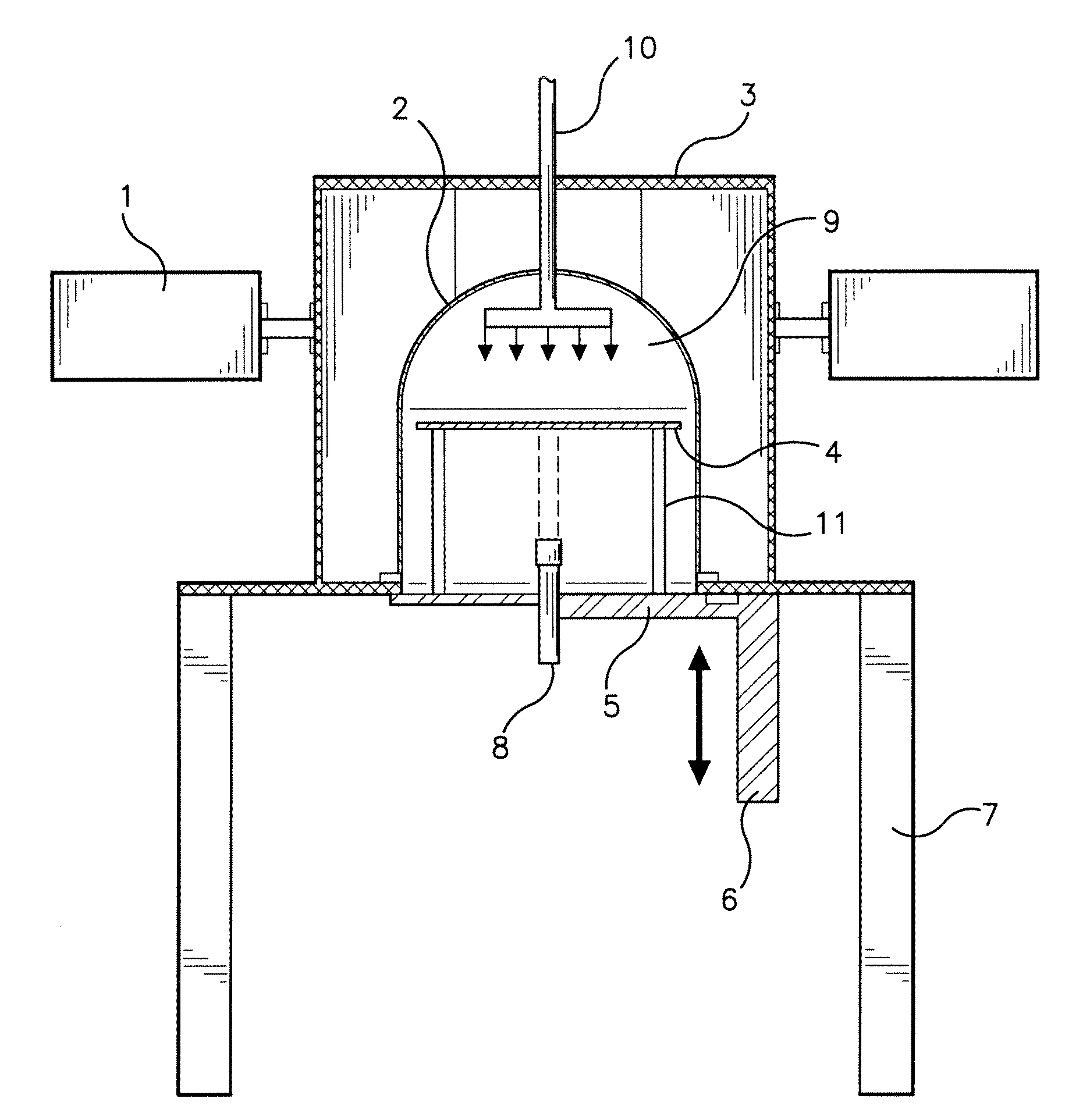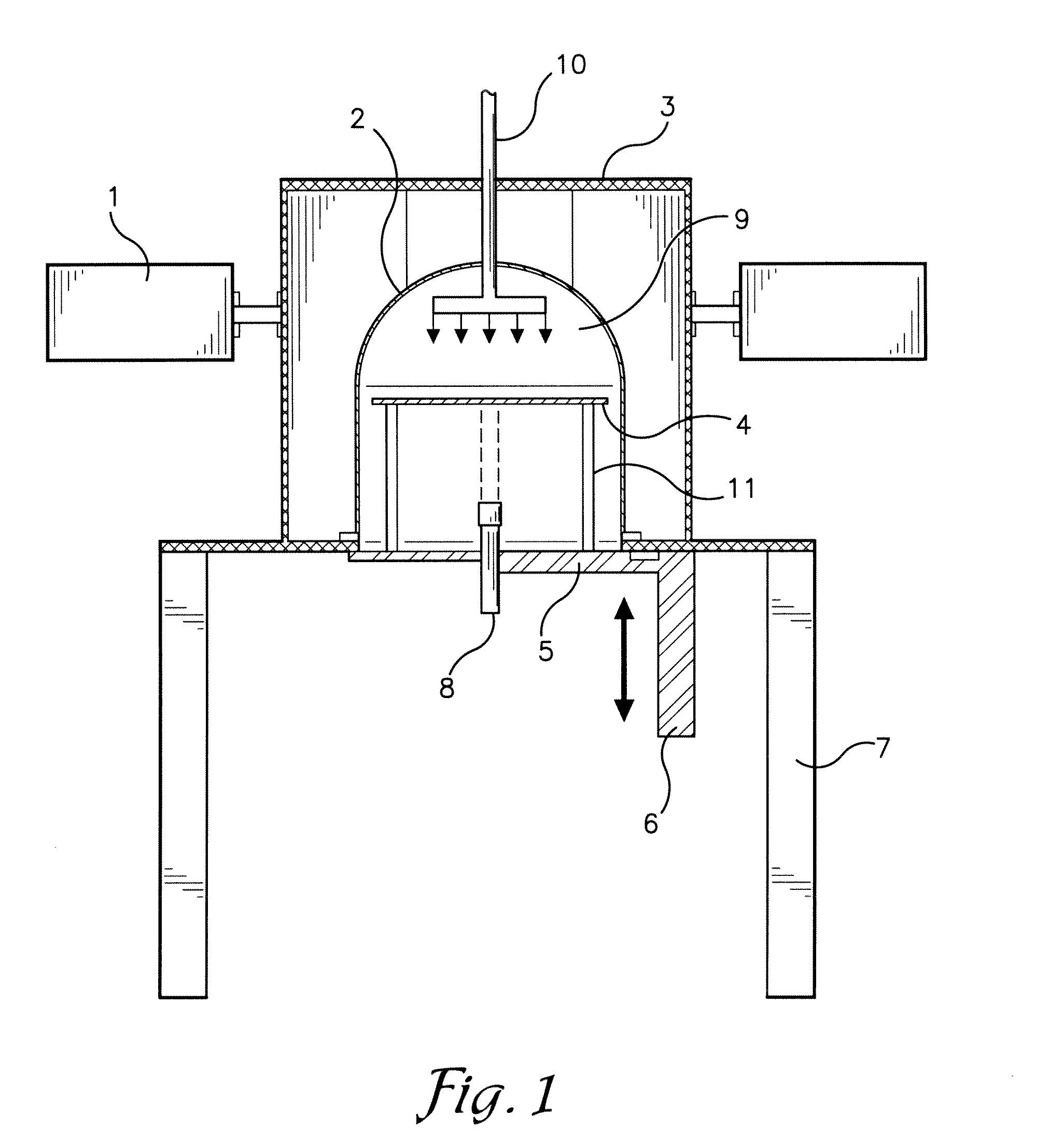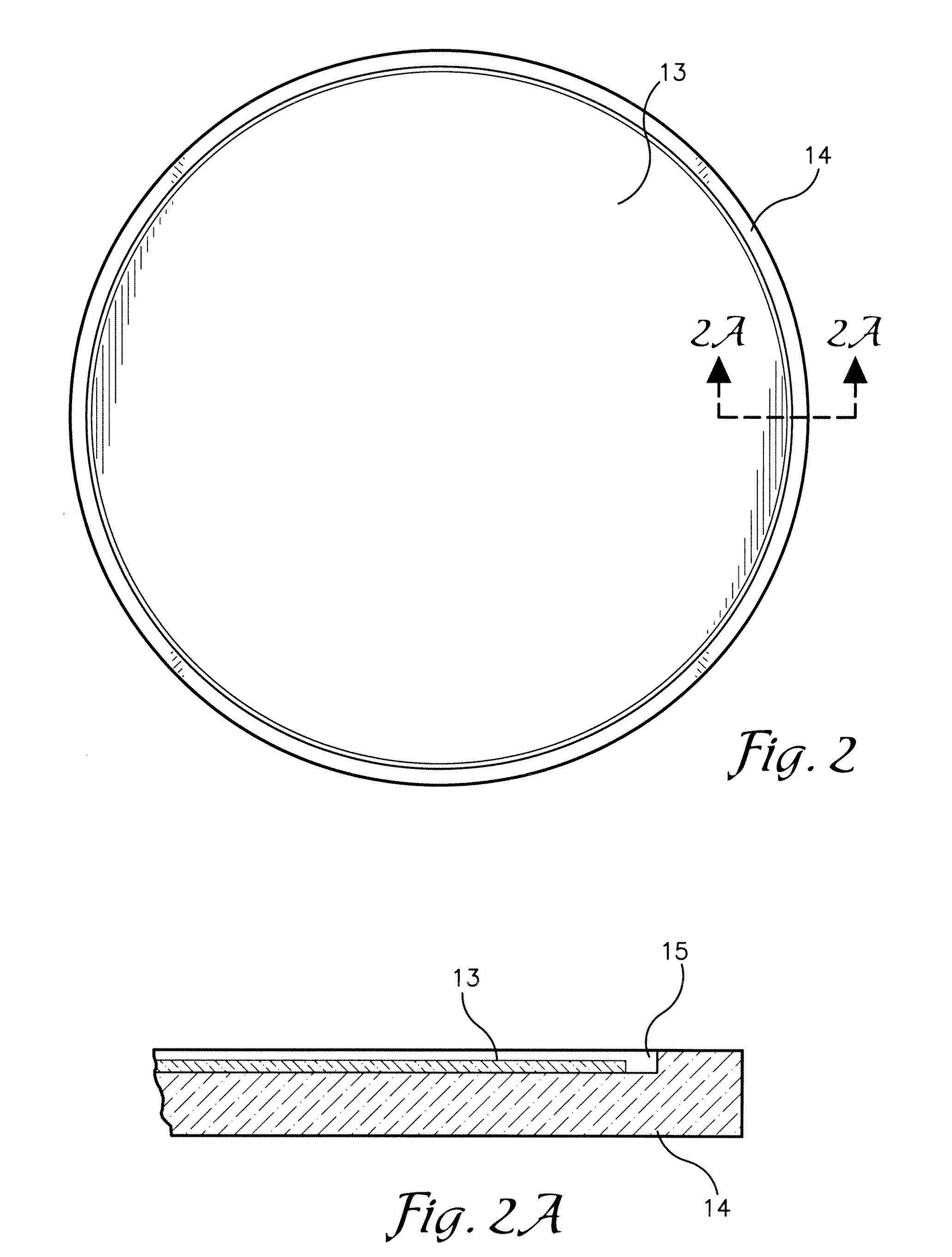System for and method of microwave annealing semiconductor material
a technology of microwave annealing and semiconductor materials, applied in the field of microwave annealing systems and methods, can solve the problems of difficult development of post-annealing processing equipment able to meet operational requirements, subject to end of range (eor) defects, or unrepaired damage, etc., and achieve the effect of facilitating repair
- Summary
- Abstract
- Description
- Claims
- Application Information
AI Technical Summary
Benefits of technology
Problems solved by technology
Method used
Image
Examples
Embodiment Construction
.
BRIEF DESCRIPTION OF THE DRAWING FIGURES
[0018]The present invention is described herein with reference to the following drawing figures, with greater emphasis being placed on clarity rather than scale:
[0019]FIG. 1 is a cross section view of one embodiment of the system;
[0020]FIG. 2 is a view of an embodiment of a susceptor plate component of the system;
[0021]FIG. 3 is a Secondary Ion Mass Spectrometry (SIMS) Profile plot of an implant, pre- and post-microwave treatment, showing the effect of no dopant diffusion of the implanted region, along with a comparison of prior art treatment (RTA);
[0022]FIG. 4 is a SIMS profile graph of an Ultra Shallow Junction (USJ) implant, pre- and post-microwave treatment, showing the effect of no dopant diffusion of the implanted region.
[0023]FIG. 5 (a) and (b) are views of Transmission Electron Microscopy (TEM), demonstrating the damage recovery of the present invention treatment, pre- and post-process.
DETAILED DESCRIPTION OF THE INVENTION
[0024]With r...
PUM
| Property | Measurement | Unit |
|---|---|---|
| frequency | aaaaa | aaaaa |
| frequency | aaaaa | aaaaa |
| frequency | aaaaa | aaaaa |
Abstract
Description
Claims
Application Information
 Login to View More
Login to View More - R&D
- Intellectual Property
- Life Sciences
- Materials
- Tech Scout
- Unparalleled Data Quality
- Higher Quality Content
- 60% Fewer Hallucinations
Browse by: Latest US Patents, China's latest patents, Technical Efficacy Thesaurus, Application Domain, Technology Topic, Popular Technical Reports.
© 2025 PatSnap. All rights reserved.Legal|Privacy policy|Modern Slavery Act Transparency Statement|Sitemap|About US| Contact US: help@patsnap.com



